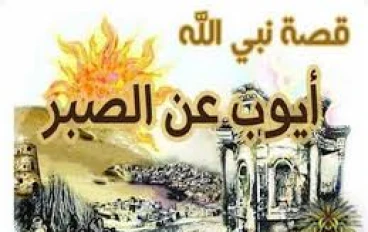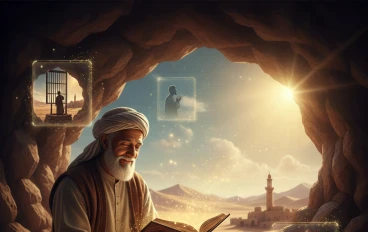
RASOL MOHMMED RASOL ALAAH
🌿 The Life of Prophet Muhammad (Peace Be Upon Him)
Introduction
Prophet Muhammad (peace and blessings be upon him) is the final messenger of God, sent to all of humanity as a mercy, a guide, and a light in times of ignorance and darkness. His life represents a perfect model of faith, patience, justice, humility, and compassion. Through his noble example, billions of people across the world have found meaning, peace, and guidance.
This essay explores in great detail the remarkable journey of Prophet Muhammad (PBUH) — from his blessed birth and early life in Mecca to his prophethood, his struggles to spread the message of Islam, the building of the Muslim community, and his eventual passing.

Birth and Early Life
Prophet Muhammad (PBUH) was born in the city of Mecca in the year 570 CE, known as the Year of the Elephant, when the Abyssinian ruler Abraha attempted to destroy the Kaaba. God protected His sacred house, and in that same year, the light of the final Prophet entered the world.
He was born to Aminah bint Wahb and Abdullah ibn Abdul-Muttalib, a respected man from the noble tribe of Quraysh. Sadly, his father died before he was born, leaving him an orphan even before his first breath.
At the age of six, he also lost his mother, and his grandfather Abdul-Muttalib took care of him until his death two years later. Thereafter, his uncle Abu Talib raised him and protected him with great love. Though orphaned and poor, Muhammad (PBUH) grew up known for his honesty, intelligence, and gentle nature.
Youth and Early Adulthood
As a young man, Muhammad (PBUH) worked first as a shepherd, tending sheep — a humble beginning that taught him patience, humility, and responsibility. Later, he entered the world of trade, where he became known throughout Mecca for his integrity. People trusted him completely, calling him “Al-Amin” (The Trustworthy) and “As-Sadiq” (The Truthful).
At the age of 25, he was employed by a noble and wealthy widow named Khadijah bint Khuwaylid. She was impressed by his honesty and good manners, and she later proposed marriage to him. Their marriage was a model of love, respect, and peace. Khadijah became his most loyal supporter and the first believer in his message when revelation came. Together, they had six children, including their beloved daughter Fatimah (RA).
The Beginning of Revelation
As he grew older, Muhammad (PBUH) began to withdraw from the corruption and idolatry that filled Mecca. He would spend long periods meditating in the Cave of Hira, seeking truth and guidance.
At the age of 40, during one of his moments of solitude, the Angel Gabriel (Jibreel) appeared to him with the first revelation:
“Read! In the name of your Lord who created.”
This marked the beginning of his Prophethood and the dawn of a new era in human history.
At first, the Prophet was frightened by the experience, but his wife Khadijah comforted and reassured him, taking him to her cousin Waraqah ibn Nawfal, a Christian scholar who confirmed that Muhammad had indeed been chosen as a Prophet of God.
The Early Years of the Mission
For the first three years, the Prophet (PBUH) called people to Islam in secret, inviting those closest to him to believe in the One God. The first to accept Islam were Khadijah (RA), Abu Bakr (RA), Ali ibn Abi Talib (RA), and Zaid ibn Harithah (RA).
Afterward, God commanded him to preach openly, saying:
“And warn your closest relatives.”
When he stood on Mount Safa and called the people of Mecca to abandon idol worship and worship the One God, they mocked and rejected him. Only a few believed, while most of Quraysh opposed him fiercely. Despite the persecution, Muhammad (PBUH) remained patient and steadfast, delivering his message with love and wisdom.
Persecution and Suffering
The Prophet and his followers faced terrible oppression. The early Muslims were tortured, boycotted, and exiled. Many had to flee to Abyssinia (Ethiopia), where a just Christian king offered them refuge.
Even as his people suffered, the Prophet continued to preach with mercy and compassion. When his beloved wife Khadijah and his protector Abu Talib both died in the same year, it became known as “The Year of Sorrow.” Yet, despite his grief, he did not give up.
Seeking new opportunities to spread the message, he traveled to Ta’if, but the people there ridiculed him and threw stones at him until his feet bled. Still, he prayed for their guidance, saying:
“O Allah, guide my people, for they do not know.”
The Night Journey and Ascension
After years of hardship, God honored His Prophet with the miraculous journey of Al-Isra and Al-Mi’raj. In one night, he was taken from Mecca to Jerusalem (Al-Aqsa Mosque) and then ascended through the seven heavens, where he met previous prophets and was granted the gift of prayer (Salah) — the spiritual link between Muslims and their Creator.
This event strengthened the Prophet’s faith and reminded the believers of their spiritual purpose.
The Migration (Hijrah) to Medina
As persecution intensified, God commanded the Prophet and his followers to migrate to Medina (then known as Yathrib). The Hijrah marked a turning point in Islamic history. The people of Medina, known as the Ansar (helpers), welcomed him with open hearts, singing:
“Tala‘a al-badru ‘alayna…”
In Medina, the Prophet established the first Islamic state, built on faith, justice, equality, and brotherhood. He built the Prophet’s Mosque (Masjid an-Nabawi), established a constitution guaranteeing freedom of religion and mutual rights, and united the tribes who had long been enemies.
Building the Islamic Community
The Prophet (PBUH) became not only a spiritual leader but also a political and social reformer. He taught kindness, forgiveness, charity, and respect for women, the poor, and the weak.
Over time, the Muslim community grew stronger, and the Quraysh sought to destroy it through war. The Muslims fought several defensive battles, such as Badr, Uhud, and the Battle of the Trench (Al-Khandaq). Despite losses and hardships, the Prophet always emphasized patience and trust in God.
One of his most remarkable achievements was the Treaty of Hudaybiyyah, a peace agreement with Quraysh that opened the way for the peaceful spread of Islam.
The Conquest of Mecca
In the eighth year of Hijrah, the Prophet (PBUH) led a peaceful army to Mecca, which surrendered without bloodshed. He entered the city humbly, his head bowed in gratitude to Allah.
Instead of taking revenge on his enemies, he forgave them all, saying:
“Go, for you are free.”
This act of mercy transformed hearts, and soon Mecca became the spiritual capital of Islam. The idols in the Kaaba were destroyed, and the message of monotheism was firmly established.

The Farewell Pilgrimage and Final Sermon
In the tenth year of Hijrah, the Prophet (PBUH) performed his Farewell Pilgrimage (Hajj) and delivered his famous Farewell Sermon before thousands of Muslims. He emphasized equality, justice, and human rights, saying:
“O people, your Lord is One, and your father is one. No Arab has superiority over a non-Arab, nor does a non-Arab have superiority over an Arab, except by piety.”
He reminded the believers to hold fast to the Qur’an and his Sunnah, promising they would never go astray if they followed them.
Death and Legacy
Shortly after returning to Medina, the Prophet fell ill. For several days he suffered from a fever, yet he continued to advise and lead his people. On Monday, the 12th of Rabi’ al-Awwal, in the year 632 CE, he passed away at the age of 63 in the arms of his beloved wife Aisha (RA).
The entire city wept. His death marked the end of revelation but the beginning of a legacy that would change the world forever.
Prophet Muhammad (PBUH) left behind not wealth or power, but a message — a message of faith, mercy, and justice. Through his character, he transformed nations and continues to inspire billions more than 1,400 years later.
Conclusion
The life of Prophet Muhammad (peace be upon him) is the most extraordinary story in human history. From an orphaned child in the deserts of Arabia to the leader of a global faith, his journey is a testament to faith, perseverance, and divine purpose.
He taught the world that true greatness lies not in wealth or strength, but in righteousness, humility, and service to others.
May peace and blessings forever be upon the Prophet Muhammad — the man who brought light to humanity and whose message continues to guide us toward truth, compassion, and peace.
































